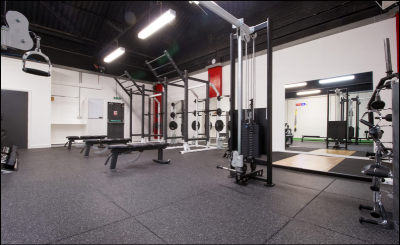This week I have a guest post for you from Peter Meakin. Peter is a former consulting client of mine and the founder of Perform Gym, located in Liverpool, England. He's officially got a year of business operations under his belt, and some lessons to share. Enjoy!
Perform Gym - Liverpool
Having officially passed the one-year mark as an independent gym owner, I can honestly say I’m happy it’s behind me. Not because it went badly, but because the transition from personal training to gym ownership hit me like a tonne of bricks.
Over this past year, I have spent a lot of hours researching the best ways to run my new business. I've reviewed the systems used at many established facilities and read any fitness-related business literature I could find (which is how I found Pete).
Everyone says the same thing: Start small; keep overhead down; it’s going to cost more than you think; it’s going to be tougher than you think.
I struggled to relate to these successful facilities and trainers. They were saying how tough running their business was, but all I could see was their success.
And lets be honest, does anybody discuss how tough business is until they’re successful enough to say that they’re past that point now?
Here are 3 lessons I learned in year-one and want to share from the viewpoint of someone who isn’t out of the woods yet:
1. It's best to limit your offering.
When you are conceiving your ideas, you think that you can do it all. A year ago I was a one-to-one personal trainer. I thought I’d carry on with one-to-one training whilst growing a semi-private model, a bootcamp, build upon my strength & conditioning background, add holistic fitness options, and sell supplements. The list goes on and on...
In trying to serve everyone, I was serving no one. My time disappeared quickly. I found myself saturated, and wasn’t making much profit because of the increased overhead.
This is where creating a singular focus or niche comes into play (I never really understood how to do this with the general population, until recently).
Pick a primary offering (I chose semi-private personal training) and a target market. At Perform, I target semi-affluent 30-50 year old general population clients looking to get healthier, leaner and improve their lifestyle.
It is a good idea to have a secondary option for those who fall slightly outside the scope of this offering. My secondary service offering is a bootcamp program which is available at a cheaper rate.
For me, creating this niche and simplified offering streamlined my business model immediately. My client base now reflects the singular service that I want to offer. The clients who don't enjoy these methods eventually filtered out of our program. Like-minded clients gravitate toward the small group environment, and training has become more enjoyable and motivational for both my clients and myself. The improved training environment organically promotes further business growth.
2. Clients don’t like change.
I had an established client base before opening my own facility thanks to my time spent personal training. My clients were committed, enjoyed my training, and we shared good rapport. I thought that opening an awesome new facility with all of the bells and whistles would make everyone happy. My existing clients would benefit, and old clients would return.
Truth be told, your clients may enjoy what they are doing now, but are not guaranteed to embrace change just because you say it's better. Many of them may be comfortable with your existing facility and don’t want to move, or simply enjoy your current training model. After all, that is what they chose to pay for in the first place.
Clients want you to understand their point of view and demonstrate patience as they see and experience the new service format on their terms. I sought advice from Pete as I planned a transition to a semi-private training model:
‘Clients don’t like change. Make the transition from your current offerings slowly, beginning with one or two weekly sessions and building as demand dictates.’
It took 6 months to convert my entire client base (other than those who require one-to-one supervision) to my semi-private model. My current clients are now happier than ever with their training system and wouldn’t want to change back.
3. Step back and think.
When you're a "one man band," you’re coaching every training session, delivering every consultation, answering every call, cleaning, marketing and handling all of the administrative tasks. Until you are established, I don’t really see a way around it.
It wasn’t until I took a step back to look at the bigger picture that I identified the obvious flaws in my business and created solutions.
It’s easy to get bogged down, grinding away in the day-to-day operations of a small business. It’s harder to come up for air, set aside some time for important tasks like brainstorming, marketing, admin, and long-term planning.
I've come to learn that the more time I spend working on the business rather than working in it, the more money my business earns.
On to year-two...
While I have no shortage of year-one lessons learned, these three have had the biggest impact on how I operate. They've reshaped the way I approach developing my business, and my enjoyment of the process. Hopefully they can move you from perpetually busy, to efficient and profitable gym owner status.
About the Author
Combining a high level of academic and vocational study with extensive experience of maximizing performance at the elite levels of professional sport (ranging from professional club level up to Olympic and international athletes), Peter Meakin is recognized as one of the most skilled Trainers in the Liverpool area. His website can be found at www.performgym.co.uk


